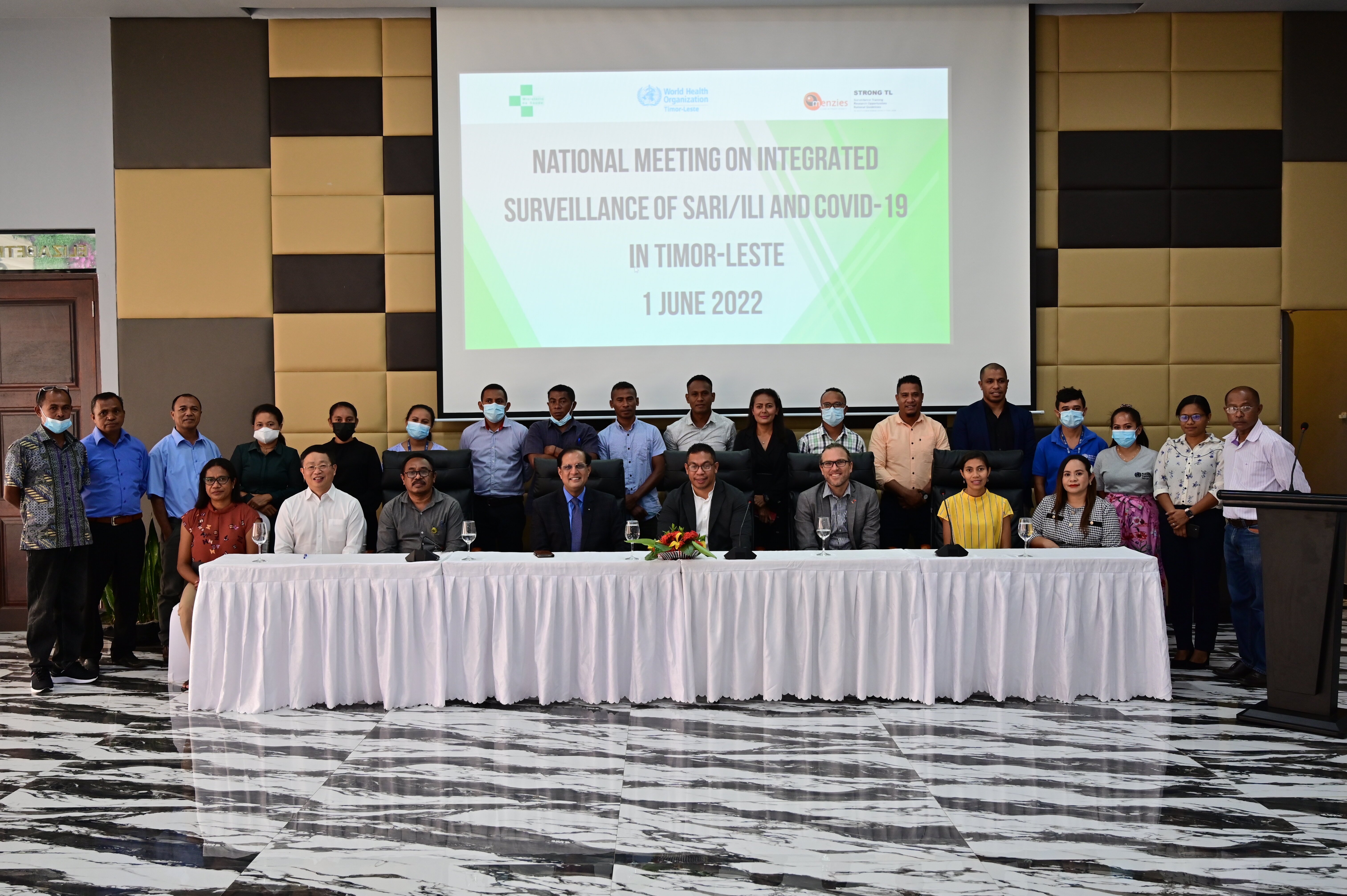Key WHO Contributions
- Assembled a team of specialists in 2021 to assess Timor-Leste's National Health Laboratory (NHL) and sentinel surveillance network and identify key areas for improvement.
- Provided both technical and financial support to the Ministry of Health in Timor-Leste for a national consultation workshop to formulate a strategy for integrated surveillance of SARS-CoV-2 and influenza.
- Worked in collaboration with the Ministry of Health to develop Standard Operating Procedures (SOPs) for integrated surveillance.
- Supported training workshops for health workers at sentinel surveillance sites and provided mentorship to enhance their proficiency in integrated surveillance, monitoring and supervision.
- Coordinated a comprehensive review of the surveillance system in November 2022, providing additional guidance.
- Dr Odete Maria Freitas Belo, Former Minister of Health, Timor-Leste
How did Timor-Leste, with the support of WHO, achieve this?
In 2021, a united team of specialists from the WHO Collaborating Centre for Reference and Research on Influenza in Melbourne, Australia, the WHO Regional Office for South-East Asia, and key national stakeholders assembled to conduct a comprehensive joint national and international evaluation of Timor-Leste's National Health Laboratory (NHL) and influenza sentinel surveillance network. Their multifaceted approach encompassed key informant interviews, review of laboratory documentation, on-site assessments of testing procedures, and first-hand observation of specimen handling at sentinel sites. The ensuing assessment report underscored the essential areas for improvement in bio-risk management, quality control, and document handling, whilst also emphasizing the ongoing need for attention to equipment maintenance and calibration.

A national meeting on the integrated surveillance of influenza and SARS-CoV-2 was held in Dili, Timor-Leste in June 2022.
Photo credit: WHO Timor-Leste
To reinforce Timor-Leste's endeavours, WHO extended both technical and financial assistance to its Ministry of Health (MoH), orchestrating a national consultation workshop in Dili in June 2022. This workshop gathered a cohort of 40 key stakeholders. This diverse assembly, comprising municipal health directors, executive directors from national and referral hospitals, and representatives from the NHL, convened with a unified objective: to develop a comprehensive strategy for integrated surveillance of SARS-CoV-2 and influenza.
- Dr Arvind Mathur, WHO Representative to Timor-Leste
Following the workshop, WHO technical specialists collaborated with the MoH to amalgamate their collective insights, in tandem with global guidelines, into Standard Operating Procedures (SOPs). Made available in both English and Tetum languages, these SOPs functioned as a roadmap for a series of training workshops. The workshops, hosted by the MoH and supported by WHO's technical and financial resources, provided health workers at sentinel surveillance sites with the necessary knowledge and tools to operate proficiently within the integrated surveillance framework. Beyond the workshops, WHO extended mentorship and technical assistance to medical professionals and laboratory technicians, bolstering their skills in case detection, diagnostic testing, and surveillance integration. To date, Timor-Leste has been successful in submitting timely reports of influenza and SARS-CoV-2 test results, along with epidemiological data, from the sentinel sites to FluNet and FluID.
In November 2022, the WHO Regional Office for Southeast Asia (SEARO) organized a comprehensive review to fortify influenza-like illness (ILI) and severe acute respiratory infection (SARI) surveillance in Timor-Leste.[4] The review team, composed of experts from the national influenza programs of Nepal, Bangladesh, and the US Centers for Disease Control and Prevention, conducted assessments of health facilities serving as influenza sentinel surveillance sites and the MoH surveillance department in accordance with global and regional standards.[5] They offered guidance for the integration of COVID-19 surveillance to the existing influenza surveillance system, applauded Timor-Leste's integrated monitoring capacity for respiratory pathogens, and lauded its inventive sample transportation and data management systems. Nonetheless, they also underscored the importance of sustainable ILI/SARI surveillance, strategic planning for post-pandemic COVID-19 surveillance, improved performance at sentinel sites, and the establishment of a technical working group for system oversight.
References
- World Health Organization. PIP Framework Partnership Contribution [web portal] (accessed 19 February 2024)
- World Health Organization. End-to-end integration of SARS-CoV-2 and influenza sentinel surveillance: revised interim guidance [publication] (accessed 19 February 2024)
- World Health Organization. Integrating SARS-CoV-2 and influenza surveillance in Timor-Leste [news] (accessed 19 February 2024)
- World Health Organization. Strengthening influenza surveillance in Timor-Leste: review conducted [news] (accessed 19 February 2024)
- A guide to develop the methodology, tools and the summary report of the joint national and international review of influenza sentinel surveillance in WHO’s South-East Asia Region. (accessed 19 March 2024)
- Global Influenza Strategy 2019–2030. (accessed 19 March 2024)
- Pandemic influenza preparedness framework for the sharing of influenza viruses and access to vaccines and other benefits, 2nd ed. (accessed 19 March 2024)

